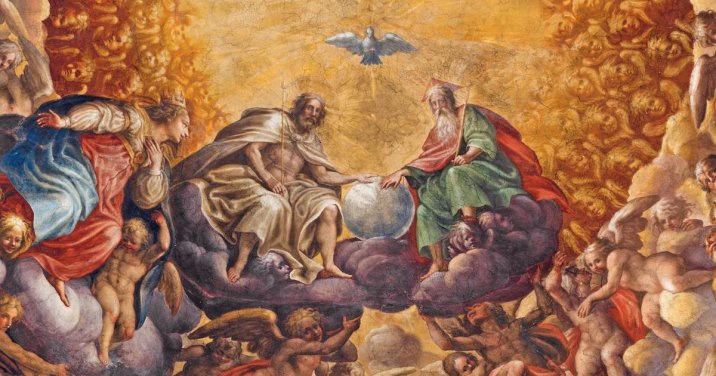Judaism and Christianity disagree in a number of ways. The most fundamental impasse is obviously Jesus. Christians embrace Jesus as the God of Israel incarnate, the messiah who came to earth to offer himself as an atoning sacrifice for the sins of humanity. One can find a spectrum of opinions about Jesus within Judaism, but not that one. For a Jew serious about their faith, accepting Jesus as God feels polytheistic—like a violation of the creed of Judaism in the Shema: “Hear, O Israel, the Lord our God, the Lord is one” (Deut. 6:4; JPS Tanakh). You can’t have more than one God in heaven.
It wasn’t always that way in Judaism.
The Jewish Godhead
Twenty-five years ago, rabbinical scholar Alan Segal produced what is still the major work on the idea of two powers in heaven in Jewish thought. Segal demonstrated that the two-powers idea was not deemed heretical in Jewish theology until the second century CE. He carefully traced the roots of the teaching back into the Second Temple (“Intertestamental”) era (ca. 200 BCE). Segal was able to establish that the idea’s antecedents were in the Hebrew Bible. Several passages became subjects of rabbinic discussion. For example, is there anything that strikes you as odd in Gen. 19:24?
“Then the Lord rained on Sodom and Gomorrah sulfur and fire from the Lord out of heaven.”
If you noticed that the divine name (Yahweh)—translated “Lord”—occurs twice, creating the impression of two divine actors, you saw what many Jewish thinkers saw in ancient times. The Hebrew Bible contains similar passages, in which the Lord is speaking and then refers to God in the third person (e.g., Amos 4:11).
Other passages became core focus points in the idea of two powers in heaven. Exodus 15:3 describes Yahweh as a “man of war.” That phrase might take our minds back to the captain of Yahweh’s host whom Joshua encountered (Josh. 5:13–15). Jews were certainly aware of that passage, but rabbis instead tied it to Exod. 23:20–23. In that text, God sends an angel to lead the people into the Promised Land. This angel was unique among all others not only because he could forgive sins (or not), but because God’s “name” was in him. The “name” is a Hebrew expression used as a substitute reference for God himself—his very presence or essence (e.g., Isa. 30:27–28). Even today, conservative Jews who will not say the divine name use ha-Shem (“the name”) to refer to God.
The idea of God in human form made Dan. 7:9–13 crucially important. In this famous vision scene, the Ancient of Days (God) sees “a human one” (“son of man”) coming to him with the clouds. It is to this figure that God gives everlasting dominion. This is the passage Jesus quotes to Caiaphas when the high priest demands to know who he is. Caiaphas’ reaction tells us immediately that he knew Jesus was claiming to be the God of Israel in human form—the second power. Caiaphas tears his clothes and charges Jesus with blasphemy (Matt. 26:63–68).
Early Judaism understood this portrayal and its rationale. There was no sense of a violation of monotheism, since either figure was indeed Yahweh. There was no second distinct god running the affairs of the cosmos. During the Second Temple period, Jewish theologians and writers speculated on an identity for the second Yahweh. Guesses ranged from divinized humans from the stories of the Hebrew Bible to exalted angels. These speculations were not considered unorthodox. That acceptance changed when certain Jews, the early Christians, connected Jesus with this orthodox Jewish idea. This explains why these Jews, the first converts to following Jesus the Christ, could simultaneously worship the God of Israel and Jesus, and yet refuse to acknowledge any other god. Jesus was the incarnate second Yahweh, the second power in heaven.
The Jewish Trinity
My Jewish Trinity course for Logos Mobile Education takes students through the Old Testament basis for the Godhead and Judaism’s two-powers idea. Once the verses and motifs for the second power become clear, I also introduce students to how the same ideas get applied to the Holy Spirit. The Trinitarian teaching of the New Testament was not new to the Jewish apostles who lived with Jesus and inherited his message. They, along with Paul, knew the Old Testament well. How they write about Jesus and the Spirit reveals deliberate connections to teachings familiar to Jews.
The Jewish Trinity is therefore an ideal course for conversations with Jewish friends and Jewish evangelism. It’s also a powerful resource for learning to deal with the doctrinal error of denying the deity of Jesus, perpetuated by groups like Jehovah’s witnesses and even “oneness” movements within Christianity.





